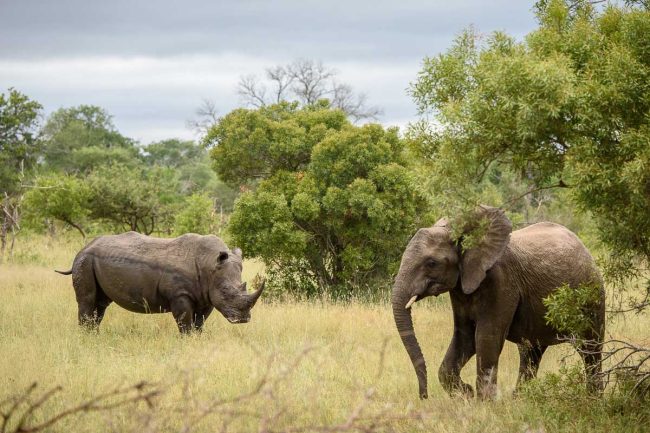Overview
The Big 5 safaris in Rwanda are a journey that will drive you to Akagera National Park, the only park that hosts Africa’s big 5, elephants, cape buffalos, lions, leopards, and rhinos at the same time. Rwanda is ranked the cleanest country with the most organized capital city Kigali in the whole of East Africa. It is known as the land of a thousand hills due to its landscape and terrain. Rwanda is so interesting to visit with its four national parks among which Akagera National Park, the biggest of them all harboring over 8000 wildlife.
Akagera National Park is one of Africa’s biggest national parks that was established in 1934. It is located in the eastern part of Rwanda and covers an area of 1,122 square kilometers. An area of 2500 square kilometerswas gazette by the Belgian government at first as the original size of Akagera National Park. This was set up to purposely protect the spectacular biodiversity of flora and fauna. It was nicknamed “Parc aux Lycano’s” a French statement meaning park of Lycano. Wildlife in Akagera lived a peaceful life until there arose rampant poaching of the wildlife, land encroachment by the local people, deforestation, and farming which devastated the animals to begin moving to the nearby national parks. This not being enough, the long tragic period of the Rwanda genocide of 1994 led to the massive killing of the wildlife and most of them became almost critically endangered and extinct.
In 1994 as the genocide ended, the few that were left were again displaced reducing the parkland from 2500 to 1122square kilometers. This land was used to resettle the refugees of the genocide, farming, and cattle grazing activities, which always created insecurity for the few wildlife existing at that period as they could still be hunted down by poachers. The African National Parks which was a conservation NGO, joined efforts with the Rwanda Development Board in 2009 to conserve Akagera National Park once again, forming Akagera Management Board in 2010.
The management since then has ensured the protection of the wildlife and increase in the critically endangered species by trans-locating some of them from South Africa, helping the animals multiply among other efforts. Today, Akagera National Park hosts 500 bird species, about 130 savannah elephants, around 20 leopards, over 20 black rhinos, 58 lions, over 85 Rothschild giraffes, 2093 buffalos, 1057 impalas, 998 Zebras, and 950 water bucks among other wildlife.
Africa’s Big 5 in Akagera National Park
Akagera National Park is the only park in Rwanda that hosts all of Africa’s big 5, that were at first lost in the Rwanda genocide apart from the buffalos due to their temper and suspecting danger at any time and deal with it. The big 5 are on the increase, attracting several tourists to Akagera National Park.
The African Elephants
Elephants in Akagera National Park were under extinction during the period of the Rwanda genocide of 1994 and when they were hunted for their tasks. Many of the African elephants were lost again in the park after the refugees took over two-thirds of the park for settlement and cattle grazing. Later in 1975, over 26 calves of elephants were trans-located from South Africa to Akagera leading to the increase of the elephants to 130 individuals in the park.
Lions
Lions are well-known kings of the jungle all over the world who are thought to be the strongest with the loudest roar in the wild. Akagera National Park hosts 58 lions today after the long-time struggles of restoring the wildlife of in the park by the African parks and the Rwanda Development Board. Seven lions were transferred from South Africa in 2015 to Akagera National Park to make the lion concentration increase, and due to the favorable and conducive atmosphere, these survived and multiplied. More of the lions were brought into Akagera in 2017 and from the current census report, Akagera National Park hosts 58 lions.
Cape buffalos
The cape buffalos are very many in number more than all other big 5 due to their untold temper that was difficult and dangerous for the poachers to hunt them. Buffalos are social animals living in a group called a herd and can easily attack in case they sense any danger anywhere. They always have high concentration marking Akagera with 2093 buffalo individuals.
Leopards
Leopards are one of the deadly wildlife animals that are difficult to spot since they always keep in the tree branches and hide in the tall grass in search of their prey. Leopards are so unique with short legs, and long and spotted bodies that are very attractive to watch. Leopards are very few in number with only 20 leopard individuals in Akagera National Park since they only give birth to one cub at a time and chances of females are very few.
Rhinos
Rhinos were long lost for about 10 years after the Rwanda genocide only to be restored in 2017 when 18 black eastern rhinos were relocated from South Africa to Akagera National Park by the African parks in conjunction with the Rwanda Development Board. More were introduced in 2019 increasing the Rhinos to 20 individuals.
When is the best time for Africa’s big 5 safaris?
Akagera National Park is open year-round and most preferable in early September since this is a peak season as well as late June. The dry season allows tourists to easily spot the wildlife when the vegetation is sparse and all animals are concentrated by the lakes. From June to August, it is a dry season as well however, rainfall is received in less amounts making it a perfect time for the safari photography and game drives. This season balances both dry and wet offering a spectacular view of the biodiversity in Akagera National Park.
The other months of March, April, May, October, and November are wet most especially afternoon and evening hours making game drives and guided nature walks preferable only in the morning hours.

